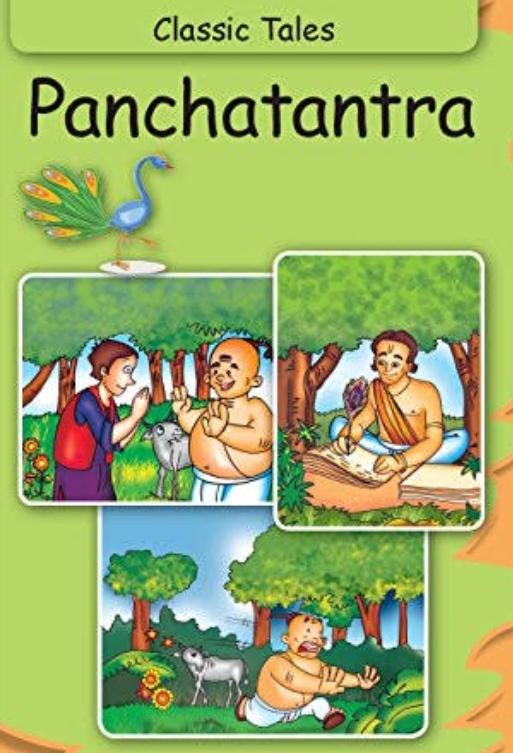Panchatantra (Illustrated): Classic Tales Summary
Panchatantra (Illustrated): Classic Tales Summary
Author: Vishnu Sharma
Subject: Pandit Vishnu Sharma’s Panchatantra, retold by Shubha Vilas, is a magnificent compilation of moral stories taken from the five books of the Panchatantra, namely Mitra-bheda, Mitrala bha, Ká kolù kï yam, Labdhapraná sam and Aparï ksitaká figure.This plush hardcover book with clever moral stories and exquisite illustrations is unlike other versions of Panchatantra! Shubha Vilas brings her own energy and insight to the stories, and the stories come to life through Ishan’s magnificent drawings.
Type: Fairytale
Summary
Panchatantra is one of the most widely translated non-religious books in history.The Panchatantra was translated into Middle Persian/Pahlavi in 570 CE by Borzūya and into Arabic in 750 CE by Persian scholar Abdullah Ibn al-Muqaffa as Kalīlah wa Dimnah.In Baghdad, the translation commissioned by Al-Mansur, the second Abbasid Caliph, is claimed to have become “second only to the Qu’ran in popularity.” “As early as the eleventh century this work reached Europe, and before 1600 it existed in Greek, Latin, Spanish, Italian, German, English, Old Slavonic, Czech, and perhaps other Slavonic languages. Its range has extended from Java to Iceland.” In France, “at least eleven Panchatantra tales are included in the work of Jean de La Fontaine.”
The prelude to the Panchatantra identifies Vishnu Sharma as the author of the work. Since there is no other independent external evidence about him, “it is impossible to say whether he was the historical author or is himself a literary invention”.Based on analysis of various Indian recensions and the geographical features and animals described in the stories, Kashmir is suggested to be his birthplace by various scholars.
The prelude narrates the story of how Vishnu Sharma supposedly created the Panchatantra. There was a king called Sudarshan[citation needed] who ruled a kingdom, whose capital was a city called Mahilaropya (महिलारोप्य), whose location on the current map of India is unknown. The king had three sons named Bahushakti, Ugrashakti and Anantashakti] Though the king himself was both a scholar and a powerful ruler, his sons were “all dullards.” The king despaired of his three princes’ inability to learn, and approached his ministers for counsel.They presented him with conflicting advice, but the words of one, called Sumati, rang true to the king. He said that the sciences, politics and diplomacy were limitless disciplines that took a lifetime to master formally.Instead of teaching the princes scriptures and texts, they should somehow be taught the wisdom inherent in them, and the aged scholar Vishnu Sharma was the man to do it.

